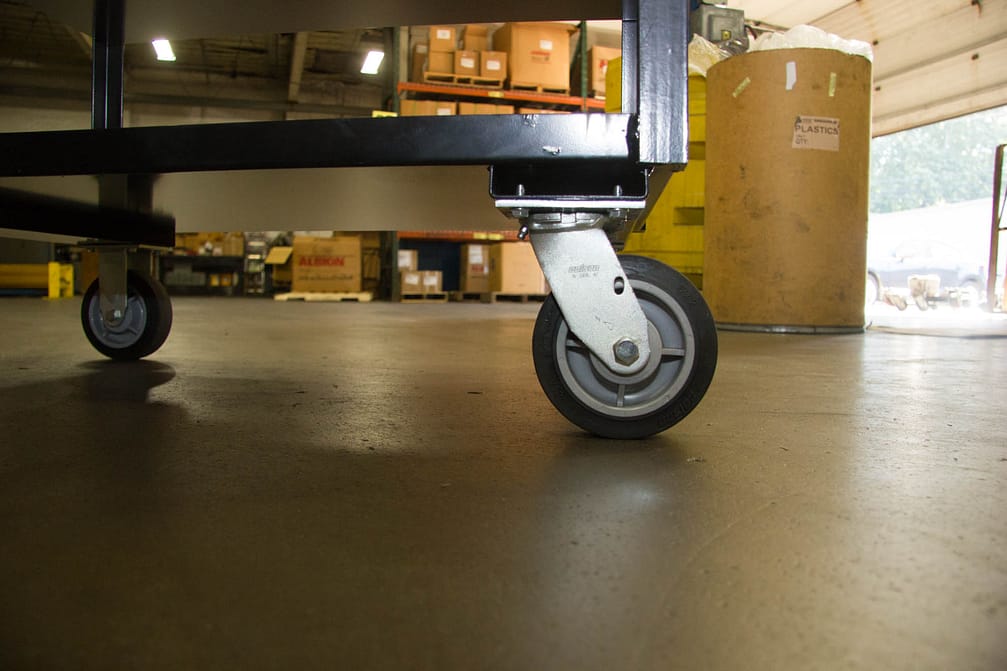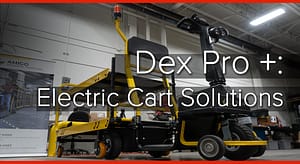Casters come in an assortment of shapes and sizes. As a result, it can be difficult to choose the best fit for your application. There are two high-level categories for casters; hard tread casters and soft tread casters. Each classification has its own advantages and disadvantages, so I’ve highlighted the key differences in this article to help you get one step closer to choosing the proper caster wheel for your application.
Hard Tread Casters
Generally, it takes less force to get a hard wheel rolling than it does to move a soft tread wheel. This makes hard wheels a much more attractive option for applications in which you’ll be moving your product across carpeted floors. Hard wheels, on the other hand, will be noisy on vinyl, tile, and hardwood floors, making these casters the less than ideal option for applications in which a quiet cart is necessary. Additional benefits for hard tread casters include:
- Maintain shape over time
- Lower maintaining force needed to keep product rolling
- More durable
- Tend to have longer lifespans
- More economical for heavy load applications
Soft Tread Casters
The largest benefit associated with soft tread casters deals with the caster’s ability to minimize noise and absorb vibrations. While hard wheels are best suited for carpeted applications, soft wheels should be specified in instances where hard floors are in use. If you do use a soft caster on carpeted floors, make sure to invest in floor mats or you will have trouble rolling the soft wheel through carpeting.
Soft wheel casters can also be compared to car tires in the sense that they can become flat and then ‘take a set’ (in other words, take on a new form). Over time soft wheels can bounce back to their original shape, but in many cases, these warped casters are replaced beforehand. Soft tread casters also provide the following benefits:
- More cushioned rides
- Minimal damage to the floor / less likely to cause destruction
- Ability to handle both heavy and light load capacities
It is important to remember that you need to determine your wants and needs regarding caster performance prior to selecting a caster for your product. If the most important requirement is for your cart to make the least noise possible, then you’ve effectively eliminated a hard wheel. Be sure to create a hierarchy of the most important requirements for your specific application and fill the needs from top to bottom.
Which classification of caster do you specify most often? Tell us about your experience in the comments.
Keep up with us!
Stay up to date on the latest industry news and our work at Conveyer & Caster – Equipment for Industry by subscribing to our blog








